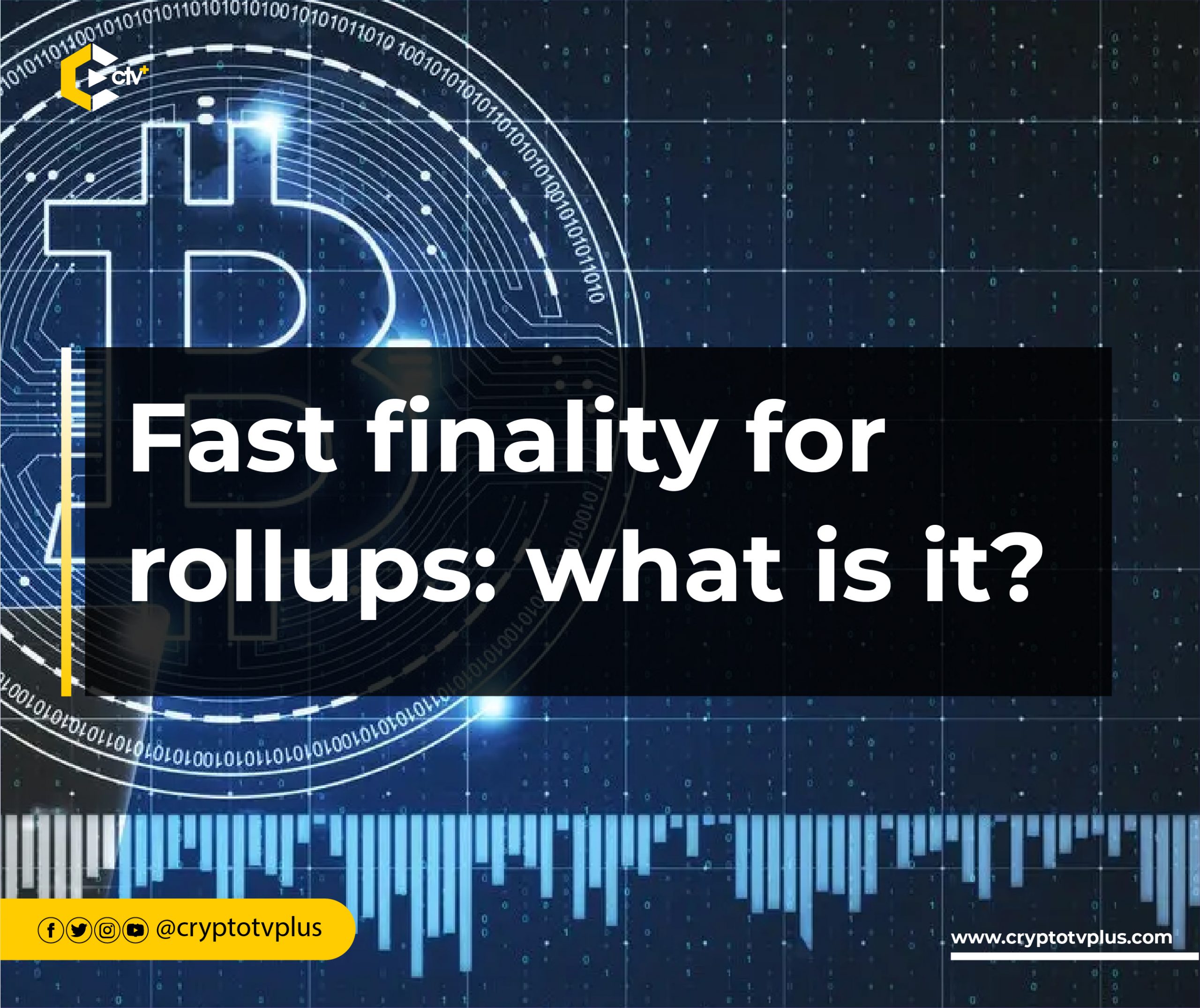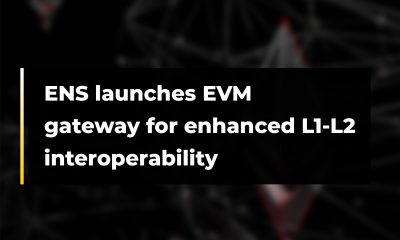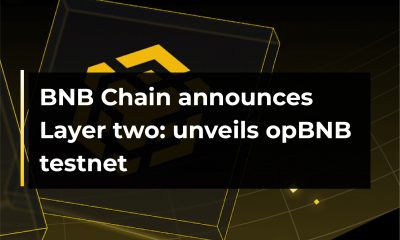Education
Fast finality for rollups: what is it?

Fast finality is an important concept in the world of decentralized finance, and it is especially relevant when it comes to rollups. But what exactly is fast finality, and why is it important for rollups? In this article, we will explore these questions in greater detail.
Fast finality refers to the speed at which the finality of a transaction can be determined. In the context of a blockchain, finality refers to the point at which a transaction is considered irrevocable. Once a transaction has achieved finality, it cannot be reversed or altered.
When a transaction is processed on a blockchain, it must be validated by the network and included in a block. When a block of transactions is mined, it is added to the blockchain and becomes a permanent part of the record. This process, known as block confirmation, can take some time, as it requires the block to be mined and added to the chain.
In the case of a centralized blockchain, such as those used by Visa or Mastercard, block confirmation can take place within seconds. However, on a decentralised blockchain like Ethereum, block confirmation can take much longer, often in minutes or even hours.
In traditional proof-of-work (PoW) blockchains, such as Bitcoin, finality is achieved through the process of mining. However, this process can take time, as it requires miners to perform complex calculations to create a new block.
This delay in block confirmation can be a major drawback for decentralized applications (dApps) that require fast transaction processing. For example, a decentralized exchange (DEX) may need to quickly match, buy and sell orders in order to provide a seamless user experience. If it takes too long for transactions to be confirmed, the exchange may become congested and users may experience delays or other issues.
As a solution to this came the need for fast finality systems that can achieve finality much more quickly. This is particularly important for rollups, which are a type of scaling solution for blockchains.
Rollups is a layer 2 scaling solution that works by grouping transactions together and including them in a single “superblock,” which is then added to the blockchain. By reducing the number of transactions that need to be processed individually, rollups can increase the scalability of a blockchain.
However, until recently, rollups did not offer the same level of finality as their on-chain counterparts. And for rollups to be effective, they must be able to achieve fast finality. If it takes too long for a rollup transaction to reach finality, it could hinder the effectiveness of the scaling.
This is where fast finality for rollups comes in.
So what is fast finality, and why is it important for rollups?
Fast finality for rollups refers to the ability of a rollup to achieve the same level of finality as an on-chain transaction in a shorter amount of time. This can be accomplished through the use of cryptographic techniques such as zero-knowledge proofs and snarks.
By processing transactions off-chain, rollups can significantly reduce the time required for block confirmation. Instead of waiting for a block to be mined and added to the chain, the results of transactions can be committed to the main chain almost immediately. This is known as fast finality, and it is a key feature of rollups.
For example, the Optimistic Rollup protocol has been able to achieve up to 2,000 transactions per second, a significant improvement over the 15 transactions per second capacity of the Ethereum main chain. Similarly, the zkRollup protocol has been able to achieve up to 100 transactions per second, a significant improvement over the Ethereum main chain.
Hence, the main benefit of fast finality for rollups is that it allows for the settlement of transactions in near real-time. This can be particularly useful in situations where time is of the essence, such as in financial markets or supply chain management.
Another benefit of fast finality for rollups is that it can help to reduce the risk of fraud and double-spending. By achieving finality faster, rollups can provide greater security and confidence to users, making them more attractive for use in a wide range of applications.
The last advantage of rollups is their scalability. By processing transactions off-chain, rollups can significantly reduce the load on the main chain, allowing the network to handle a larger volume of transactions. This is particularly important for Ethereum, which has faced scalability issues in the past due to its limited capacity.
For example, the Ethereum scaling project Polygon (formerly known as Matic Network) uses rollups to increase the scalability of the Ethereum network. By processing transactions off-chain and committing their results to the main chain using fraud proofs, Polygon can significantly increase the capacity of the network, enabling it to handle more transactions without experiencing delays or congestion.
What are the ways that rollups can achieve fast finality?
There are several ways that rollups can achieve fast finality.
One method is through the use of a block producer, also known as a validator. A validator is a node on the network that is responsible for aggregating transactions and committing them to the main chain. By electing a small number of validators, rollups can ensure that transactions are processed quickly and efficiently.
For example, the Optimistic Rollup protocol, which is used by Ethereum Layer 2 projects such as Loopring and Arbitrum, uses a validator to process transactions and commit their results to the main chain. In the Optimistic Rollup model, a small number of validators are chosen to handle the transaction processing and commit the results to the main chain. This allows for fast finality, as the validators can commit the results of transactions almost immediately, rather than waiting for a block to be mined and added to the chain.
Another way that rollups can achieve fast finality is through the use of fraud proofs. Fraud proofs allow users to challenge the validity of a transaction if they believe it to be fraudulent. If a challenge is successful, the transaction can be reversed, and the results can be committed to the main chain.
For example, the zkRollup model which was developed by the Ethereum scaling project Matter Labs, and used by projects such as Loopring and Starkware, relies on fraud proofs to ensure the security of the network. ZK-Rollup uses zero-knowledge proofs, a type of cryptographic proof that allows users to verify the authenticity of a transaction without revealing any sensitive information.
By using fraud proofs, rollups can ensure the integrity of the network and provide fast finality for transactions.
Closing
Fast finality is a crucial feature of rollups. By providing fast finality, rollups can ensure the integrity of the network and provide a better user experience for decentralized applications. In addition to fast finality, rollups offer other benefits such as scalability and lower fees, making them an attractive option for developers and users alike.

























1 Comment